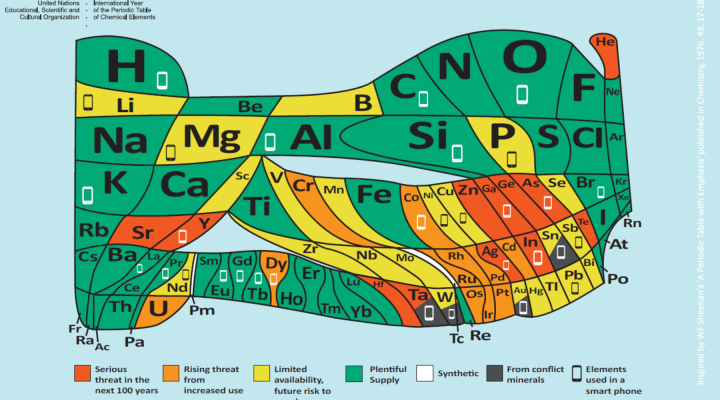
A "new" periodic table shows Earth’s rapidly diminishing elements
A "new" periodic table shows Earth’s rapidly diminishing elements

Remember the periodic table from high school chemistry class? Today, it contains 118 natural and man-made elements in tidy, equal-sized boxes from gases to heavy metals.
With many natural resources on the planet disappearing, the European Chemical Society has released a new periodic table. This one, with curves and lumps, shows how much of each element is actually left on the planet.
“Some of these elements, we have less than a hundred years before it’s much more difficult to get hold of them,” said David Cole-Hamilton, vice president of the European Chemical Society.
Two examples: indium and helium.
Indium is part of an element that makes your smartphone touch screen work. Helium is used in magnetic resonance imaging, deep sea diving and … yes, party balloons.
While MRI scanners and deep sea divers recycle their helium, party balloons pop, releasing the precious element into the air.
“It’s very, very light and it’s very, very stable, so if it gets into the atmosphere, it can go right up to the edge of the Earth and it can be lost into outer space, forever,” Cole-Hamilton said. “The amount of helium at the moment is very low, reserves are probably only enough for about 10 years.”
Correction (Jan. 28, 2019) A previous version of this story incorrectly identified the element Indium. The text has been updated.
There’s a lot happening in the world. Through it all, Marketplace is here for you.
You rely on Marketplace to break down the world’s events and tell you how it affects you in a fact-based, approachable way. We rely on your financial support to keep making that possible.
Your donation today powers the independent journalism that you rely on. For just $5/month, you can help sustain Marketplace so we can keep reporting on the things that matter to you.


















